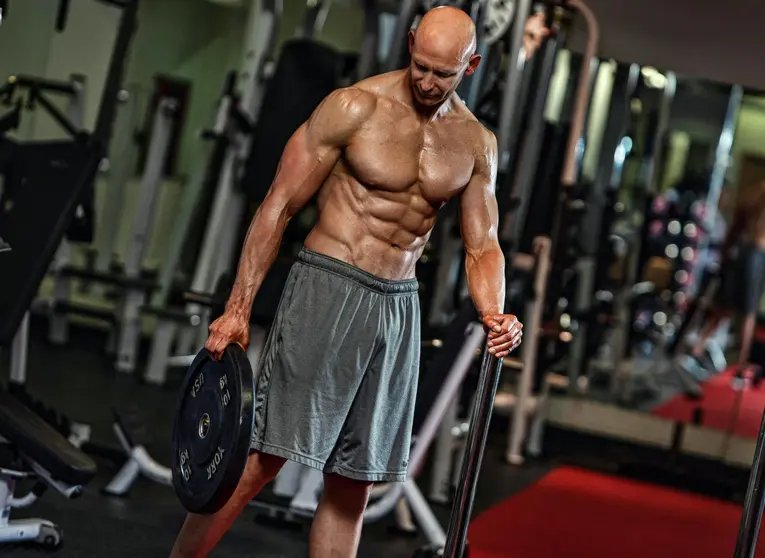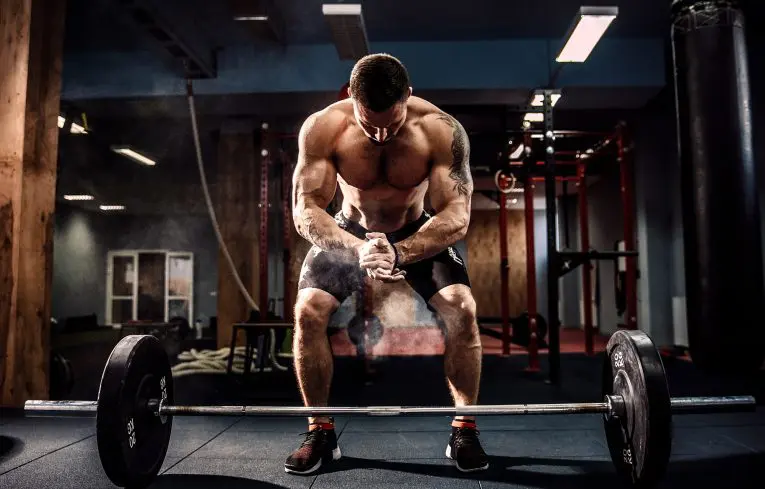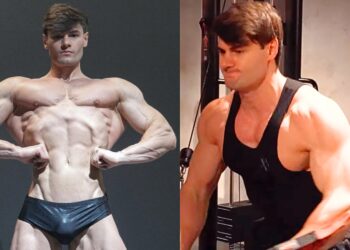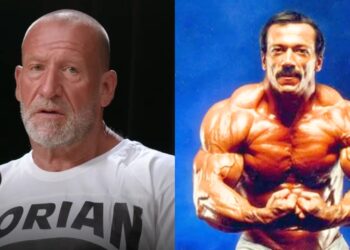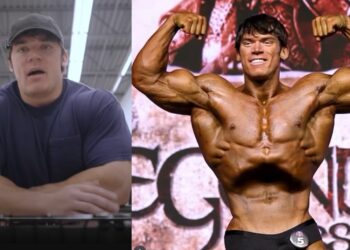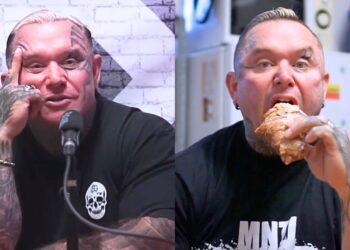An aesthetic physique requires a blend of well-proportioned muscle mass at a low level of body fat. Combining wide shoulders, big arms, depth through your chest and back, powerful-looking legs, and a narrow waist. That’s a lot of boxes to tick on the way to developing a truly impressive physique. To achieve this, the classic bulking and cutting process has proved quite effective and extremely popular. Unfortunately, the bulk-cut cycle misses out one crucial element needed to maximize your results. For steroid-using pro bodybuilders, this isn’t that big of a deal. For natural trainees, it’s much more problematic.
For a typical hardgainer, skipping this phase has dire consequences and can kill their gains! The missing phase helps hard gainers to retain the muscle they build in a bulk better when they cut. It will also help keep fat gain in-check when they transition from cutting back to bulking. You might be wondering why more people aren’t talking about this crucial phase of training.
To my mind there are two main reasons for this:
- The need for instant gratification
- Terrible PR
If you are anything like me you want results and you want them immediately. The phase of training I’m about to reveal to you will help you get better results long-term, but most of us are too impatient to think long-term. Anything that requires delayed gratification, patience, and maturity needs a really good sales pitch to gain popularity.
Sadly, the vital phase of training that holds the key to continued long-term progress has had terrible PR. It’s been given really unsexy names like “strategic deconditioning” or “maintenance”. Not exactly the phrases a marketing guru would suggest to get attention, are they?
What’s in a Name?
I’ll be honest with you, those names put me off too. I ignored the concepts even though the reasoning behind them made perfect sense. My desire for rapid progress meant I continued to flip-flop between bulking and cutting phases. I repeatedly gained some size and then lost most of it when cutting. If you’ve experienced the same I’m sure you can understand how frustrating it is.
Level Up Your Fitness: Join our 💪 strong community in Fitness Volt Newsletter. Get daily inspiration, expert-backed workouts, nutrition tips, the latest in strength sports, and the support you need to reach your goals. Subscribe for free!
The whole time I knew the solution, but I ignored it because I lacked the maturity to do what was required to make the muscle stick. My weight yo-yo’d up and down, but I didn’t look significantly different after repeated bulk and cuts.
Eventually, after hiring a coach to hold me accountable and to remove emotion from the decision-making progress, I began to do what was required. Their objective decision making forced me to do what I had been avoiding. Once I started to incorporate the missing phase into my training I saw dramatically improved results. These weren’t newbie gains either.
By the time I was mature enough (or just frustrated enough with the long plateau I’d hit) to utilize this strategy, I’d been lifting consistently for 10 years. At that stage in your lifting career progress is expected to be slow. Yet after finally learning from my mistakes and being grown up enough to give it a fair shot, I saw better results than I had in years!
Better Branding
Once I’d seen these results in my own training I was sold on their efficacy. I felt like I’d discovered the holy grail, the missing piece of the puzzle, and I passionately promoted it to my clients. They saw the same when they started incorporating it into their training plan. There is no doubt about the effectiveness of this phase. In fact, recent research has confirmed its validity.
The key to getting clients to succeed with this phase of training was giving PR it deserves. Sure, the results I’d seen helped but, the real buy-in came when I re-branded this phase of training. I stopped calling it a maintenance phase and instead called it a Solidification, or Strength Phase. Getting buy-in with these names was much easier than it had been when calling it maintenance.
It’s About Maintaining Body Weight NOT Training to Maintain
The first question I used to get with maintenance phases was, “why train to maintain?”
Simple, you are not training to maintain. A maintenance phase is actually a strength-focused block of training. During this phase, you should see your lifts increase. Sounds better already, right?
The name maintenance originates from the goal of maintaining your body weight for a period of time. This is a tough sell for lots of people. We all like momentum and we love to see progress. We need to see the number on the scales climb when we bulk and want them to drop like a stone when cutting. Maintaining weight feels like you aren’t achieving anything. This couldn’t be further from the truth though. Maintaining your body weight can actually be a very powerful strategy to turn short-term results into long-lasting outcomes.
For a hardgainer, maintaining weight at the end of a bulk increases the likelihood that the weight they’ve gained hangs around long-term. It allows them to make their new higher body weight the new normal. They can “own” this new bodyweight. Then as they transition to a cut after maintaining their body weight for a while they retain the muscle mass much better. This is a game changer for the typical hardgainer. Most hardgainers see all of their gains vanish when they start a cut.
Maintaining weight at the end of a cut for someone who naturally stores more body fat is also very powerful. It allows their body to create a new settling point for body fat. After doing this their body is a bit more resistant to fat gain when they switch to a calorie surplus. Gone are the days of them feeling like they regain al the lost fat overnight
A maintenance (sorry solidification) phase also potentiates more effective muscle building training in future.
Training – The Bigger Picture
The training you do to build muscle or lose fat shouldn’t be that different. The key difference is your diet. Think of it this way – training is the car and your diet is the steering wheel. Your training should always be designed to stimulate muscle growth. Your diet dictates the direction you go in. If you’re in a surplus then your weight goes up. In a deficit and the opposite happens.
While making some tweaks can optimize your training for muscle gain and fat loss, they should not be radically different. The phrase I repeat to my clients when they want a “fat-burning” workout is this, “what built it best retains it best.” To build muscle in a bulk and retain it in a cut, training hard, and using relatively heavy weights for high training volumes is the fundamental strategy you should adhere to.
This provides the context for the importance of maintenance phases as they relate to training for long-term progress.
The Repeated Bout Effect
The repeated bout effect is sports science speak for the concepts of the Law of Diminishing Returns and Adaptive Resistance.
Level Up Your Fitness: Join our 💪 strong community in Fitness Volt Newsletter. Get daily inspiration, expert-backed workouts, nutrition tips, the latest in strength sports, and the support you need to reach your goals. Subscribe for free!
The body is an amazing adaptive machine. The more you do something the more the body adapts and the less you get from it. Constantly hammering high-volume bodybuilding training is an example of this. After several months of this your body has made most of the adaptations needed to survive the onslaught of your workouts. Adaptive resistance has set in and doing more of the same will yield little benefit. This is where a maintenance phase comes in to its own.
Intense bodybuilding training takes its toll and generates a lot of fatigue. The more you can do without exceeding your capacity to recover the more you grow. Eventually, you exceed this point. Your tolerance to training volume follows an inverted-U pattern. Once beyond this point your results diminish. Meanwhile, fatigue climbs rapidly and the stimulus to fatigue ratio from each session deteriorates. Keep following this path and you’ll stop making gains. Doing more of the same will not overcome this fact. Yet this is exactly the mistake most gym junkies make.
By reducing your overall training volume, focusing on a handful key exercises, and doing fewer sets per exercise you can “re-sensitize” yourself to the positive effects of traditional bodybuilding style training. You become more responsive to that style of training. Even better, after a solidification phase, you are also stronger after training with heavier weights and lower volumes. This means you can handle heavier loads in the traditional hypertrophy rep ranges when you switch back to normal bodybuilding training. Lifting more weight for more reps is a recipe for faster growth!
The Meat in a Bulking Sandwich
After a low-volume strength phase, you are literally primed for growth. For people doing what I call a “double bulk,” utilising a strength phase is crucial. By making the low-volume strength phase the meat in a high-volume bulk sandwich, it means you can get more effective bulking workouts done than if you just tried to plough through one extremely long bulking phase.
To illustrate the point, compare these two scenarios.
Scenario 1 – you bulk continuously for 24 weeks. That’s nearly 6 months pursuing the exact same goal. Even with lots of intelligent tweaks to your training program, the chances are that adaptive resistance will have set-in towards the end. Every workout you do yields a smaller return. By the end you would need to do brutal workouts to provide a muscle-building stimulus. You might very well have reached the tipping point with training volume where you are doing more than you can recover from and getting no benefit, or worse, actually losing gains despite your heroic efforts in the gym. Even if your weight on the scales is climbing there is a good chance most of it is fat gain.
Contrast this with scenario 2 – you bulk for 12 weeks. During this time, you steadily push volume up towards your maximal recovery capacity. Whilst there are some diminishing returns across the 12-weeks, each session is effective at producing a growth stimulus.
Fatigue is rising, but is hasn’t yet reached unmanageable levels. As you approach the point of adaptive resistance, you pivot and switch to a primer phase. After 2-4 weeks of low-volume strength training your body and mind is refreshed. Your muscles are re-sensitized to high-volume training and you embark on another 10-12 weeks of effective bulking.
In scenario 1, much of the second half of your bulk is inefficient. You are training outrageously hard for minimal gains. And the ratio of muscle to fat gain is most likely sub-optimal by the end.
In scenario 2, you can stack together a full 24 weeks of productive muscle building training because of the primer phase. Scenario 2 repeated over and over (with the occasional cut thrown in) will allow you to build the physique of your dreams.
Solidification
I call a maintenance phase the Solidification Phase at the end of a bulk when someone is then planning to cut.
While bulking up can make you look better with a shirt on there will inevitably be some fat gain. Perhaps you have a beach holiday coming up and you want to strip away the body fat to reveal your new more muscular physique. It makes perfect sense. The mistake I see too many guys make (this is especially true of naturally skinny guys) is that immediately after finishing their bulk, they cut aggressively. There are two reasons why this is not ideal:
- For hardgainers, this is almost guaranteed to mean they lose the final few pounds of muscle they built, almost immediately.
- The training needed to effectively strip fat is similar to the training you did in your bulk. Switching straight to a calorie deficit and trying to use the same training style just means you are fighting an uphill battle – trying to match previous gym performance with less fuel and a considerable amount of adaptive resistance thrown in. This makes the fat loss efforts harder than they need to be. This affects hardgainers, but is a far bigger concern for people who tend to struggle to get lean.
The Solution
Taking a low-volume training phase where you maintain body weight solves these two issues. For the hardgainer, it means they can hold onto their hard-fought gains. Having always been perceived as weak and skinny, they seem to like the connotations of solidifying their body too.
As an added bonus, it means that the cut is a breeze. Hardgainers can get lean pretty easily. When you remove the obstacle of adaptive resistance and let their body settle at the new more muscular version, they strip fat at an alarming rate all while retaining the newly-built muscle mass.
For regular guys, or even those predisposed to higher body fat levels, the solidification phase primes them for a more effective cut. The fatigue of high-volume training gets removed and their fat loss training sessions are more effective. It is like extending the runway for a plane coming in to land. It gives them more margin for error, makes it a less bumpy ride, and means they can glide into their destination comfortably.
It Is Not One Step Backward
Some of my clients struggle with the concept that they are taking one-step backwards before taking a couple of steps forward. I completely understand this and realize it’s a bit of a mental hurdle. While searching for a way to get their buy-in, I realized that a solidification or strength phase was not taking a step back. Instead, it was taking a step sideways to focus on another training quality that improves their bodybuilding efforts. You actually take one step-sideways to then take two big leaps forward. Once I started explaining it in these terms they were all much more excited and motivated to make use of maintenance phases to boost their long-term results.
At no point in a solidification phase are you losing muscle mass or strength. Done properly, you will actually see impressive strength gains. You are never going backwards, you are just creating the foundations for future gains. You are creating a slingshot that will fire you forward to quicker progress. When you put it like that, it seems like a no-brainer. Well at least I hope it does because I truly believe the use of maintenance phases will help you to make faster progress for longer and allow you to reach your true potential.
How to Structure Your Training in a Solidification Phase:
Put these guidelines into practice to get the most out of your solidification phase.
- The solidification phase should last 2-6 weeks (I almost always use 4 weeks)
- Train 3 x week
- Train the full body each session
- Focus on compound exercises (e.g. squats, deadlifts, chin-ups, bench press, & rows)
- Pick one exercise for each major movement per session (e.g., for back chins on day 1, bent over rows on day 2, and single arm DB rows on day 3)
- Train for strength using rep schemes like 3×5
Solidification Phase Nutrition Guidelines:
- Eat enough calories to maintain weight (hint: not sure what this is? Multiply your body weight in pounds by 15 and it will give you a very good estimate of your maintenance calorie requirements).
- If your weight fluctuates up or down by more than a pound, adjust your calorie intake accordingly.
- Consume 1g of protein per pound of body weight.
- Eat about 0.6g of fat per pound of body weight.
- The remainder of calories comes from carbs (hint: this is often about half of what you had at the peak of your bulk).
Putting the Pieces of the Puzzle Together
So, to reach your genetic potential and build a big and lean physique, change your approach from the old-school 2D approach of bulking and cutting, and replace it with the 3D version of bulking, solidifying, and cutting. Taking this approach will allow all the pieces of the puzzle to fit together and you will retain muscle mass better when cutting, get lean easier, and create greater growth potential long-term.

